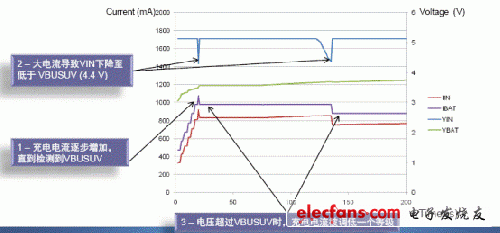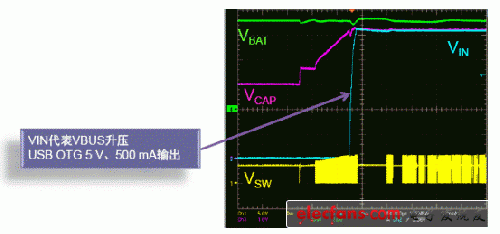In recent years, the market for portable devices such as smartphones and tablets has grown strongly, and larger screens are becoming more popular. Consumers are increasingly demanding power management experiences for application processors, graphics processors and peripherals. These have prompted portable devices to use larger capacity batteries. For example, some of the latest smartphones are equipped with 2000 mAh or even 3000 mAh batteries, and the battery ecosystem trend has undergone major changes.
In addition, the input connections of many portable devices have also changed from proprietary solutions to micro USB ports; the USB-powered (rev 1.0 Jul 2012) standard has been released to better accommodate the power requirements of the latest portable device USB ports. There is an urgent need for technical solutions that improve energy efficiency and meet the above requirements. Anderson Semiconductor, which drives energy-efficient innovation, has introduced the NCP185x series of switching battery charging solutions to help design engineers address the fast charging challenges of large-capacity portable devices and help optimize the user experience.
Faster charging with the new automatic input current limiter (AICL) technology
Battery charge and discharge management is critical in the rationality and reliability of portable device design. One of the challenges of battery charging and discharging is the need for ruggedness, energy efficiency and fast charging times to meet the demands of today's high performance, space-constrained applications. Large-capacity batteries require a larger charging current to shorten the charging time.
Conventional linear battery charging methods (including pulse mode) have problems such as low efficiency and large heat generation at high current. Switching charging solutions have significant advantages over linear solutions, such as converting more power from the input to the output; higher energy efficiency, reduced energy consumption and simplified handset design; when the input source is limited (eg 5 V, 500 mA USB port charging), can provide more current. Combining the above advantages, the switching battery charging device can charge 30% faster than the linear battery charger.
Since devices such as mobile phones cannot know the load current capability of the power adapter or USB port used by the user, the charge management device must have the function of detecting the adapter or USB port load current to ensure that the mobile device operates under safe current conditions. After charging is complete, the charge management device should be disconnected from the system and the system draws power from the external source; the system draws power from the battery only when the external power source is removed.
ON Semiconductor's NCP185x series of switching battery charging devices is a new charging technology. Its charging process is fast, with automatic input current limiting (AICL) function; it can also automatically disconnect the battery at the end of charging to extend battery life. It provides greater output current, 85% efficiency, low heat generation, faster, safer and more efficient charging, which helps improve the user experience; it also improves system stability and simplifies system design.
The NCP185x family uses an input current limiter that meets the 100 mA, 500 mA, 900 mA, or 1.5 A USB charging specification with an input source limited, and uses the auto-detect mode to adjust to the input source at maximum charge current. Ability to reduce overall charging time by at least 10 minutes.

Figure 1: Using automatic input current limiting to reduce overall charging time
Automatically disconnect the battery at the end of charging to extend battery life
Many users often complain that battery life is short, and the battery life of many portable systems is significantly affected after a few months of use, because the battery is still charging after charging. The way to optimize the overall life of the battery is to disconnect the battery automatically at the end of charging. The ON Semiconductor NCP185x features a charge and discharge path management function that automatically disconnects the battery at the end of system charging. The system only draws power from an external adapter or USB port, only in the presence of peak current activity (more than the external power adapter) When the current is supplied, such as when using GSM, the connection between the battery and the system is turned on, the current is replenished from the system for a short time, and the battery and the system remain managed at other times. In the case of an external power connection, the system preferentially draws power from the external adapter to conserve battery power and extend battery life, as shown in Figure 2.

Figure 2: Automatically disconnect the battery when charging is complete
If a device without charge and discharge path management is used, after the charging is completed, the charging module is turned off, the system starts to draw power from the battery, and the battery voltage decreases. Once the voltage drops to a threshold, the charging cycle starts again, so that the battery is often in the battery. During charging, discharging, and recharging cycles, it is easy to cause premature aging of the battery.
Instant on technology improves user experience
Another challenge in battery charging is the need to improve the user experience. Users often have this question: Why do I have to charge the system for 5 minutes after the battery is low? This is because when the user connects to the portable device for charging, it is usually also necessary to use the device. The embarrassing thing is that even the latest devices require an initial charge of about 5 minutes before allowing the system to boot and use. If dual path management (DPM) technology is used, the portable device can be turned on immediately when the charging cable is plugged in.
The NCP185x series uses this instant-on system technology. Because the integrated current source in the device can charge the battery, even if the battery voltage is very low, when the user plugs in the power adapter, the system voltage can be kept at 3.6V, let the system Turn it on immediately, no need to wait; in addition, an internal integrated 5 V booster supports USB On-The-Go (OTG) reverse power supply, or DDC voltage supply for HDMI interface, which can safely charge the battery while Power the system separately, as shown in Figure 3. When the battery voltage reaches 3.4 V, the pre-charging is completed, the external charging MOS transistor is turned on, and the system voltage follows the battery voltage. When the battery is low, the battery needs to be pre-charged for a period of time, waiting for the battery voltage to return to the minimum voltage to start.

Figure 3: Instantly turn on the portable device when plugging in the charging cable
ON Semiconductor's devices also support dead battery activation. When the battery voltage is lower than 2.2 V, the switch charging device provides a small current of 10 mA to activate the battery. At this point, the system can still be powered on immediately.
Support USB OTG accessories
For tablets, it is usually necessary to support USB OTG. The USB OTG accessory requires the portable device to act as a USB host in USB transactions, providing a 5 V output voltage on the VBUS line for peripheral use; some smartphones have an HDMI output and a 5 V DDC voltage. This typically uses an external step-up DC-DC converter to boost the battery voltage to a regulated 5 V, 500 mA rail. The NCP185x family integrates a 5 V booster that supports a USB OTG accessory or HDMI output for up to 500 mA and eliminates the need for an external boost converter. The NCP185x series grounded ID pin recognizes the USB OTG accessory and uses a reverse boost converter to provide a 5 V, 500 mA output that not only supports USB OTG functionality, but also saves an additional inductor for the bill of materials (BOM).

Figure 4: Support for USB OTG function
The game keyboard requires a strong sense of key paragraphs,so as to produce a special feel suitable for game entertainment,and achieve a good experience for players in the game. The keyboard is one of the indispensable computer peripherals in our life. The previous keyboard has been used as an input device for office typing.With the emergence of computer games, the keyboard has gradually become a peripherals for games. Due to the relatively low performance of early computers,the way of computer games in this period is also relatively simple,ordinary office and home keyboard can completely meet the needs of players.However, with the continuous upgrading of hardware performance,the fun and complexity of games are also increasing, and the requirements for keyboard performance are also getting higher and higher,so the professional Gaming Keyboard was born.
As one of the most important peripherals for playing games,the tactile feel of the gaming keyboard is the most important reference.Tactile sensation is mainly determined by the strength of the key resistance degree.To judge the feel of a keyboard,it will be tested from whether the key elastic is moderate,whether the key force is uniform,whether the key cap is loose or shaken,and whether the key process is appropriate. Although different players have different requirements for the stretch and range of the keys,the most commonly accepted peripherals for playing games are the Black Axis Gaming Keyboard Mechanical.
The appearance includes the color and shape of the keyboard.A nice and stylish gaming keyboard will add a lot of color to your desktop,while a stuffy Wireless Gaming Keyboard will make you feel dull when playing games. Therefore,for the keyboard,as long as the player feels beautiful like, practical can be.

Gaming Keyboard,Led Gaming Keyboard,Keyboard Gaming Mobile,Optical Mechanical Keyboard
Henan Yijiao Trading Co., Ltd , https://www.yjusbhubs.com